Canon
Digital Rebel XSi
Sample Photos
By Jim Zimmerlin

Canon
|

|
Here are some digital photos taken with my
|
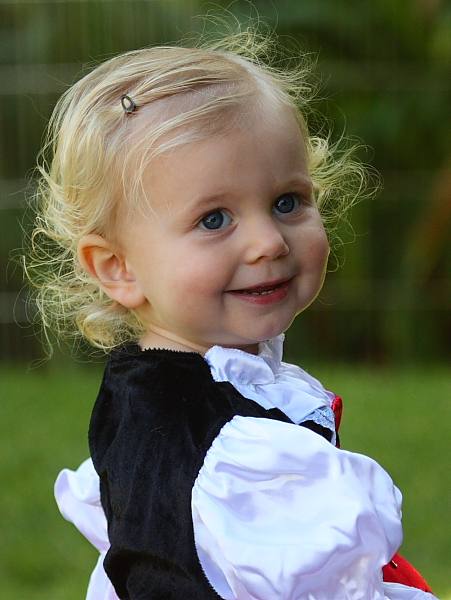 My grandniece, Gwyneth Canon 100-400mm "L" series lens Proof of how little noise there is at high speeds: this was shot at 800 iso |
|
A pelican in flight along the coast Canon 100-400mm "L" series lens When you mount the big zoom lens on the Digital Rebel, it's amazing what you can get pictures of! |
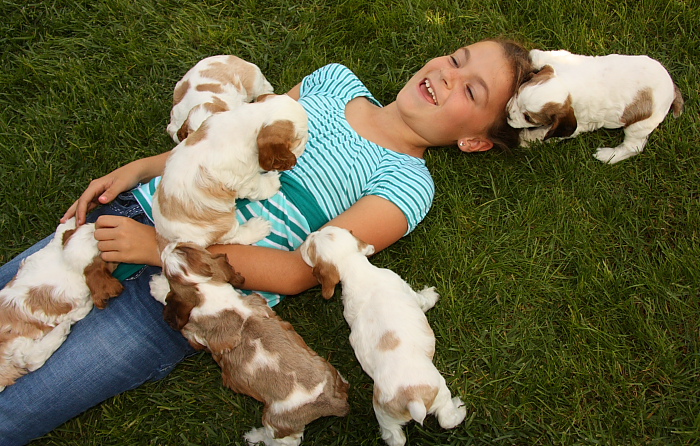 Cocker Spaniel puppies playing with our friend, Rachel Grove Canon 17-85mm image stabilized lens Getting an accurate exposure for white puppies against a dark background is very tricky for most cameras. I used the RAW mode for this shot, so I could precisely tweak the shot for exposure and color temperature. |
|
Poppies in bloom near San Luis Obispo, California Canon 17-85mm image stabilized lens |
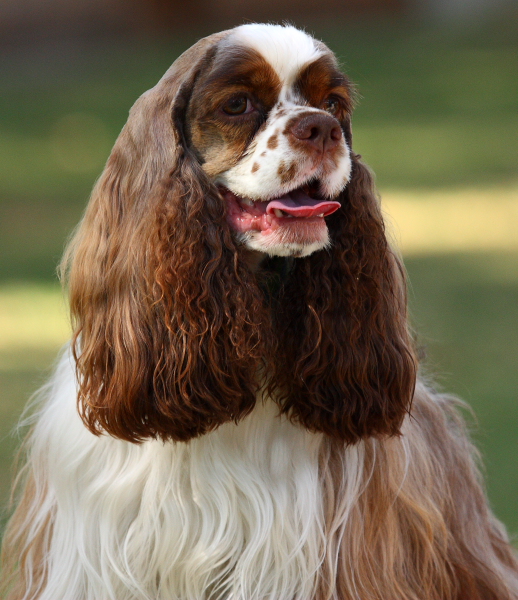 Karlie, A Sable & White Cocker Spaniel I stood way back and zoomed in to create a narrow depth of field. The image stabilization on the Canon 100-400mm "L" series lens helped keep the shakiness of my hands from ruining the focus of the shot. |
|
Sunset at Shell Beach, California Canon 17-85mm lens with image stabilization turned off due to the use of a tripod for a one-second exposure |
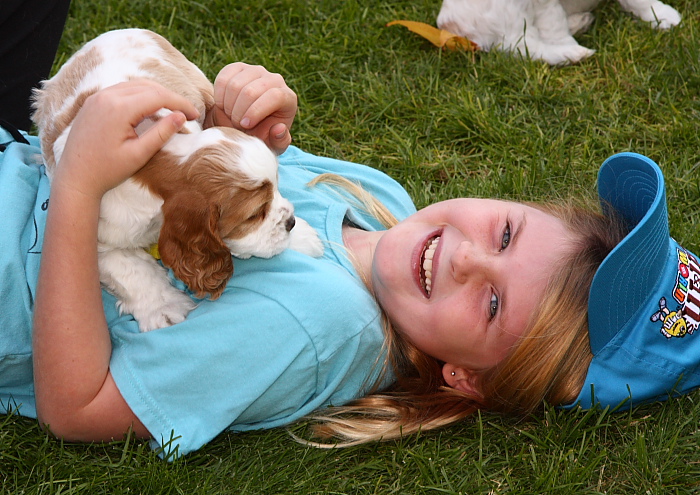 Katie Kinsinger has fun on our lawn If you want to get great pictures of kids or dogs (or both), this is the camera for you |
|
Some beautiful roses Shot with the Canon 100-400mm "L" series lens |
|
Harford Pier, at Port San Luis, California Photographed from the Pecho Coast Trail Canon 17-85mm image stabilized lens, with the camera in "landscape mode" |
|
Several bugs on an iceplant flower Shot with the Canon 100-400mm "L" series lens |
Want to see pictures I've shot with other digital cameras?
Check out the Jim Zim photo gallery
This camera is known in the USA as the Digital Rebel XSi. In some other parts of the world, it is known as the EOS 450D.
In 2003, Canon revolutionized the digital camera world by introducing the first under-$1000 digital SLR camera... the original Canon Digital Rebel. They improved on it in 2005 with the release of the Digital Rebel XT and again in 2006 with the XTi. In the Spring of 2008 they added a new model to the Digital Rebel family... the Digital Rebel XSi.
This version of the Rebel offers 12.2 megapixel images, a larger LCD screen on the back of the camera, and a whole bunch
of other improvements over the XTi. I made the upgrade from the XTi to the new XSi in May of 2008, and have been
enjoying the XSi ever since. My favorite new feature is the ability to set the iso to automatic. It doesn't
sound like a very big improvement... until you actually start using the camera, and then you find out what a great
idea that auto-iso feature really is! If you have much experience with SLR cameras, you know about the
relationship between shutter speed, aperture, and the iso setting. If you choose a high shutter speed and a low
iso setting, your lens may not be able to open the aperture wide enough to let enough light in to get the shot.
Or, if you choose a small aperture setting and a low iso setting, the camera may go to such a slow shutter speed that
your photos will be blurry. The solution to both problems is auto-iso. Pick a shutter speed or pick an
aperture setting, and let the camera choose the other two settings automatically. Let me give you a real world
example...
Canon Digital Rebel XSi with 100-400mm "L" series lens attached
Let's say you're using a big zoom lens on your camera... such as one of my favorite lenses, the 100-400mm "L"
series zoom. If you use a slow shutter speed with a long lens like that, the long lens amplifies all the shakiness
in your hands and you end up with blurry pictures. So, it's a good idea to lock your shutter speed at a fairly
quick setting when you use a long zoom lens. It's also a good idea to use a fast shutter speed when shooting
things that move quickly, like kids or animals. I wanted to take a picture of one of our Cocker Spaniels, and in
order to achieve a "blurry background" effect I used my 100-400mm lens. To heighten the effect, and to ensure a
crisp picture of the dog even if she moved a bit, I set the shutter speed to 1/400th of a second. Rather than
fiddle with aperture and iso settings until I fumbled on the right combination... I just let the camera take care
of those for me... and this photo is what I ended up with:
Reese, one of our American Cocker Spaniels
With the shutter speed set to 1/400th of a second and the iso setting in automatic,
the camera chose ISO 640 and an aperture of f/5.0... which resulted in a
perfect photo.
Absolutely no third-party noise reduction was used on any of the photos on this page!
Prior to getting the Canon Digital Rebel XSi, I owned the lower model... the XTi. There were a lot of times when I was using the XTi that the camera simply refused to take the shot... because I had chosen too low of an iso setting for the shot I was trying to get. If you choose too high of an iso setting, you get a lot of noise in your photos... and if you choose too low of an iso setting, the camera just refuses to take the picture. But with the auto-iso feature on the Rebel XSi, this will never happen to you! This one simple feature is worth all the money I spent to upgrade from the XTi to the XSi. I could never go back to a camera without auto-iso now.
This brings up another important point about the Digital Rebel XSi: it does a fantastic job of taking pictures at high iso settings without adding a lot of noise to the pictures or sacrificing a lot of image detail. This was something that always impressed me about the XTi, too... great picture quality at high iso settings. What's really surprising is that even though the XSi has a higher resolution imaging device, it has even less high-iso noise than the XTi. If you know much about digital camera imaging devices, you know that if everything else is equal, you usually get more noise in a more detailed image. So, it took some great engineering to go from a 10 megapixel imager in the XTi to a 12 megapixel imager in the XSi and not end up with more noise or less detail. Bravo to the Canon engineers!
Of course, some things have remained the same in all of Canon's Digital Rebel cameras... they are compatible with the full line of Canon EF and EF-S lenses. Other standard Rebel features: the ability to shoot in "RAW" mode, which gives you the ability to make much higher quality adjustments to your photos than you can when working with .jpg images... a full range of shutter, sensitivity, and exposure adjustments... and there's an intelligent flash "hot shoe" on the top of the camera. I had a camera a few years ago that featured a cheap stripped-down hot-shoe. Canon's system is so much better! The camera and the external flash talk to each other and share exposure, shutter, focus, and white-balance information. It really makes for the best quality flash photos I've ever been able to take. Also, if you get the 580EX external flash, you have the ability to add a second less-expensive flash unit later, which you can place in another part of the room and the two flashes will fire together at the same time. My friend, Carol Patterson, a professional photographer, showed me how this works one time and it was so impressive!
A look at the big LCD display on the back of the EOS 450D (Digital Rebel)
The LCD display is larger than what is found on the lower models, the XT and XTi
I already mentioned that the Digital Rebel XSi is a 12 megapixel camera... but maybe I should really spell it out for you: The XSi shoots images that are 4272 pixels wide and 2848 pixels tall. That may sound like a lot... it may even sound like overkill... but in my experience, it can definitely come in handy. Let me give you an example. Here's a photo that I shot with my Digital Rebel XSi at a charity fun-run/walk:
Original version of the photo - not cropped
I was excited when I got home and saw how this photo turned out, because I had caught some great body language from one of my friends and her son... but I was zoomed out way too far at the time I snapped the photo. I was able to improve the photo quite a bit with some cropping:
The problem with cropping, of course, is that you throw away a lot of resolution. The original was 4272 pixels by 2848 pixels (12 megapixels)... but by the time I was finished cropping it I was down to 1714 pixels by 1233 pixels (2 megapixels). I was able to print out a borderless 8.5x11" print of the cropped version of the photo, and it still looked very good since at 1714 x 1233 pixels I still had enough resolution to print at 150 dpi. In other words, the original image from my Digital Rebel XSi had so much resolution that I was able to throw away 83% of that resolution in the cropping process and still have enough resolution left over to make a good print of the photo! It's impressive!
I'd like to suggest an inexpensive lens that should be in the camera bag of every Canon Digital Rebel owner...
Canon's 50mm f/1.8 lens is a rare bargain in the world of Canon lenses. The reason that you want it in your arsenal is that f/1.8 rating. What that means is that this lens has an aperture that is open wide to let LOTS of light in... which makes this a fantastic lens for shooting in low-light situations. For example, if you want to do some shooting indoors in natural light without using a flash... this is the lens for you, because of that f/1.8 aperture.
At f/1.8, this is definitely the best low-light lens in my camera bag... and in addition to being very useful for indoor shots in natural light, a low-light lens like this is also great for shooting video. I've shot a lot of video with Canon T2i camera, and much of that has been with this 50mm f/1.8 lens on front of the camera. You get great video in natural light with this lens.
I still haven't mentioned the best part yet, though! You'd think a low-light lens like this would sell for a lot of money, but it doesn't! You can pick one of these up for just a little over $100. And that makes this the best bargain you'll ever find in the expensive world of Canon lenses. This lens even has a nickname among Canon fans. It's called "the nifty fifty"!
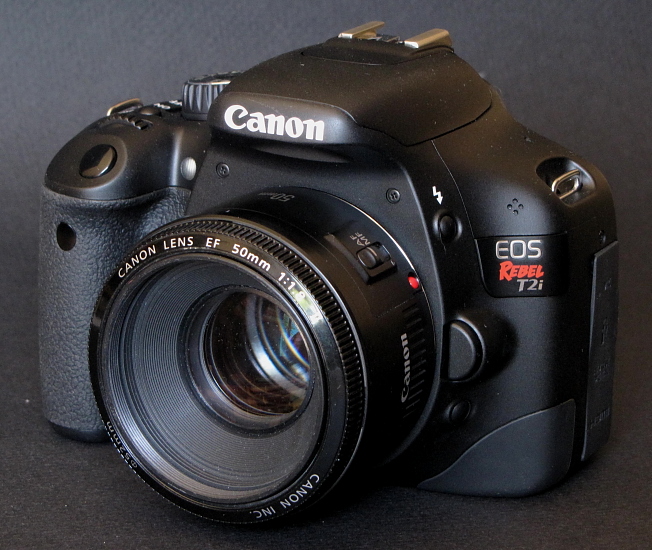
Canon EOS 550D (Digital Rebel T2i) with the 50mm "nifty fifty" lens mounted on front
If you're thinking that a inexpensive lens probably takes crappy pictures, think again!
Here's a shot I took using the Nifty Fifty lens.
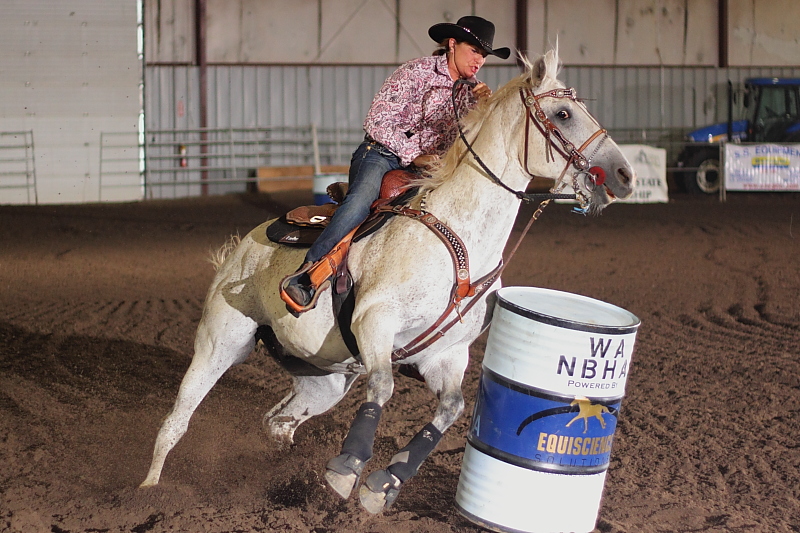
|
|
If you purchase a "nifty fifty" lens by clicking on this ad from Amazon.com they will send a small commission my way. Thanks! |
I've been extremely impressed with the Canon Digital Rebel cameras. I've taken some great photographs! I had already owned six previous digital cameras when I decided to upgrade to the Rebel XSi, and it's been interesting to see how each camera has been better than the others.
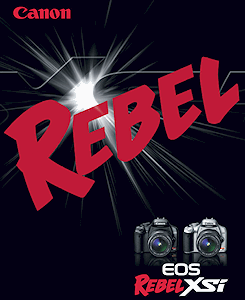 There
are lots of good reasons to go with a digital SLR camera over a traditional point-and-shoot digital camera.
Without question, the end result... picture quality... is superior on photos taken with a digital SLR
camera. It's great to be able to use interchangeable lenses... so you can use the right lens for the
particular shot you are trying to get. As someone who tends to upgrade hardware frequently... it's nice to
know that the Canon lenses I buy today will work with the Canon digital SLR cameras of the future. I don't think
it's unreasonable for me to believe that I'll be using some of the lenses I have right now for the rest of my life.
The best reason, though, is probably the reduction in "shutter lag" in digital SLR cameras. Anyone who's used a
regular digital camera knows what I'm talking about... when you push the button, you want the camera to take
the picture NOW! Also, if you put a good lens on a digital SLR camera, you'll find the autofocus feature works
better than on any camera you've ever used before.
There
are lots of good reasons to go with a digital SLR camera over a traditional point-and-shoot digital camera.
Without question, the end result... picture quality... is superior on photos taken with a digital SLR
camera. It's great to be able to use interchangeable lenses... so you can use the right lens for the
particular shot you are trying to get. As someone who tends to upgrade hardware frequently... it's nice to
know that the Canon lenses I buy today will work with the Canon digital SLR cameras of the future. I don't think
it's unreasonable for me to believe that I'll be using some of the lenses I have right now for the rest of my life.
The best reason, though, is probably the reduction in "shutter lag" in digital SLR cameras. Anyone who's used a
regular digital camera knows what I'm talking about... when you push the button, you want the camera to take
the picture NOW! Also, if you put a good lens on a digital SLR camera, you'll find the autofocus feature works
better than on any camera you've ever used before.
All this comes at a price, of course. Digital SLR cameras are a lot more expensive than point-and-shoot cameras... but the results speak for themselves. As someone who really loves photography, I think it's worth the money. The prices have definitely come down over the last few years, too.
If you're ready to make a purchase, and you appreciate the information I've presented on this web page, you can do me a favor by buying your camera, lenses, and accessories through one of the links on this page. The links take you to Amazon.com, and Amazon will pay me a small commission for any purchases... which is the best thanks you could give me for taking the time to share the information on this page with you!
|
One of the great things about using a digital SLR camera versus a point-and-shoot is the hot-shoe which allows you to use an external flash unit. Most inexpensive digital cameras do not have a hot-shoe, so you're stuck with only the built-in flash. But when you get in to the world of digital SLR cameras, you have a hot shoe so you have the option of adding an external flash on to the top. You will find that you are able to get much better results in many situations where you are shooting indoors... especially if the room has a white ceiling you can bounce the flash off of. I use a Canon Speedlite 580EX external flash on my camera, and it makes all the difference in the world in the quality of my indoor photographs. The Rebel XSi is great at high iso photography, which means that in a lot of cases you can shoot indoors in natural light. But, this only really works well if the light in the room is very evenly distributed. In the real world, you tend to have very uneven lighting with a lot of shadows. So, a flash is quite helpful. If you just use the built-in flash, though, you get very strong un-natural looking light. You can get a much more natural looking soft lighting effect by using an external flash and not pointing it directly at the subject... you swivel it up towards the ceiling and let the light bounce off the ceiling and fill the room. This is called "bounce flash". If you're going to buy an external flash, make sure it can swivel! Some lower-priced external flashes can not. And make sure it can swivel both vertically AND horizontally, so you can bounce it off the ceiling regardless of whether you are shooting in portrait or landscape orientation! The Canon Speedlite 580EX is a good match for any Canon camera that can accept an external flash, and will swivel in both directions. |
|
Here's a demonstration of why an external flash is so useful.
Three photos of our neighbor, Natalie, using different lighting techniques:
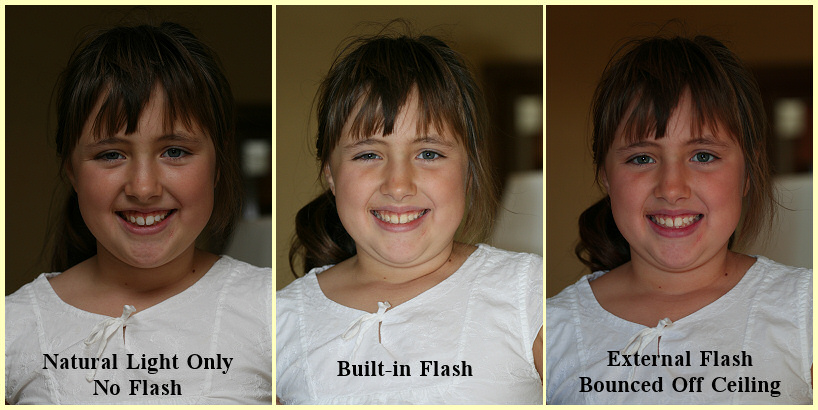
The one taken with natural light is not bad at all... there was a fair amount of light coming in through a window. The one using the built-in flash is horrible... the lighting is very harsh. You can see it actually made her squint. But the best photo of all is the one using the Speedlite flash bounced off of the ceiling. Look at the difference in the way her face is lit in that photo. If you're going for the best possible indoor photos, the Speedlite is worth every penny!
Ready for another suggestion regarding accessories for the Digital Rebel?
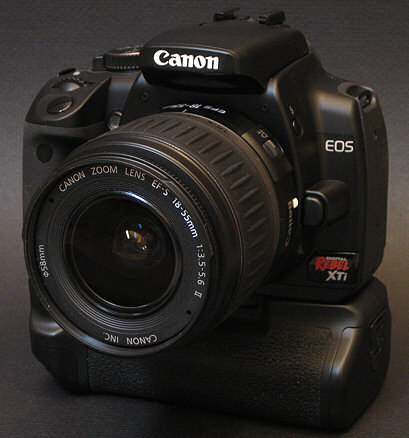 My
favorite accessory for the camera is the battery grip. It's great for several reasons. First off, it holds
two Canon batteries at the same time... so you can go twice as long without having to worry about running out of
batteries. Unless you are shooting thousands of pictures at one time, you never need to worry about whether you've
got enough battery charge left when you have the battery grip attached to your camera.
My
favorite accessory for the camera is the battery grip. It's great for several reasons. First off, it holds
two Canon batteries at the same time... so you can go twice as long without having to worry about running out of
batteries. Unless you are shooting thousands of pictures at one time, you never need to worry about whether you've
got enough battery charge left when you have the battery grip attached to your camera.
Second, the battery grip features an extra set of camera controls that are oriented for vertical (portrait mode) shooting. Without the battery grip, when you rotate the camera to shoot in portrait mode, it's very awkward to reach the shutter release, for example. With the battery grip attached, the shutter release on the battery grip is in the perfect spot. It's also easier to hold the camera in portrait mode when the battery grip is attached. Finally, the camera just looks bigger and more professional with the battery grip attached. If you put the battery grip and a big zoom lens on your Digital Rebel, people may ask you what newspaper you work for!
The picture on the right is a Rebel XTi mounted on a battery grip. I don't actually have a
picture of an XSi on a battery grip yet... but it looks very similar.
|
|
When you own an expensive camera like this, you need to protect it when you are lugging it around. Canon makes a great little carrying case... and it's just the right size for the Digital Rebel... even if you add on the optional battery grip.
| Finally, don't forget that Canon does not include a memory card in the box with the Digital Rebel. So, you'll need to be sure to get one... otherwise you won't be able to take any photos with your new camera! Each jpg image shot with the Rebel requires about 4 megabytes of memory space, and each RAW image takes up about 15 meg... so I think a 4 gigabyte card (or larger) is what you should start with. And if you're going to shoot in RAW mode a lot, think about a 8 gig SD card. |
There is a LOT more to this web site than just this page!
Please explore the rest of the site by viewing our table of contents,
or by clicking on one of the quick links below.
JimZim.net Main Page Meet Jim Zim Cruise Ships All About Our Cocker Spaniels